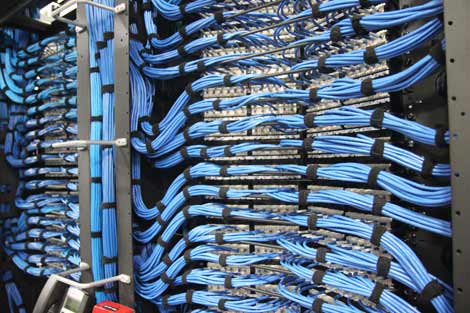Software Defined Technologies Bring Data Centers Closer TogetherSoftware Defined Technologies Bring Data Centers Closer Together
Software-defined technologies are likely to play a key role in the evolution of the modern data center. Here's a look at some of these technologies, and their potential impact on the data center environment.

servercentral-network
Software-defined technologies can help bring distributed data centers closer together by helping control and manage data. (Photo: ServerCentral)
With the evolution of cloud computing, virtualization, and IT consumerization – managers have had to re-think how they approach their business and IT needs. A big part of the technological push has been the growth in software-defined technologies.
This doesn’t only include virtualization. We’re now able to use complex hardware systems to their fullest capacity. Instead of creating one physical NIC, for example, an administrator is able to create hundreds of vNIC instances from one network component. This type of innovation has helped bring distributed data centers closer together by helping control technologies, management, and of course the data workload.
There’s a bit of a grey area as far as what can technically fall under the “software-defined” category. The reality is that this technology shares similarities between virtualization and other cloud components. Still, there are a few major technologies to be aware of in terms of their effects on the current data center environment.
Software-Defined Networks. SDN technologies have begun to evolve and make their way into more environments. Physical network have their limitations, such as creating 1-to-1 connections. With SDN, we’re able to do so much more. Truly, there are numerous benefits to deploying SDN within a data center environment. For example, creating a Global Server Load Balanced network for DR and data center high availability becomes easier. SDN tools can be used to manage virtual networks on both a hypervisor and physical network layer, as well as managing traffic flows. By using advanced networking technologies, data centers become more resilient and easier to manage. As more organizations move to a cloud platform, data center operators will have to figure out ways to connect their sometimes very distributed environments. Good traffic flow, user workload management, and controlling multiple data centers are all areas where SDN can help.
Software-Defined Security. Securing a diverse, sometimes heavily virtualized data center isn’t an easy task. Original security technologies focused primarily on the physical element and there wasn’t a large concern around the cloud or virtual environment. Now, with greater complexity and more users hitting data centers, security vendors were forced to rethink how they utilize security at the data center level. This is where next-generation security and software-defined security comes in. New platforms allow for end-point scanning, advanced access control list (ACL) creation, and controlling – at a software layer – how routes are ported between servers and even data centers. IT consumerization and BYOD (Bring Your Own Device) have had their effect on the user, data center and security technologies. Modern security devices can now scan for “rooted” devices, route users to the appropriate internal server based on the type of device that is connecting, and scan incoming and outgoing traffic for data leakage prevention (DLP) purposes.
Software-Defined Storage. Storage continues to be a vital part of any environment. On the same note, storage, the controllers, shelves and drives themselves can be quite expensive. That’s why planning, sizing and carefully controlling storage is a must for any environment. That said, the conversation around intelligent storage usage has grown over the past couple of years. Now, we’re able to logically segment one physical controller into multiple business units. Even from a compliance perspective, security can be set in such a way that only the appropriate people will see their "virtual controller." They’ll have their own storage system, but in reality there is actually a larger controller in place supporting numerous business units. Furthermore, storage appliances have become more intelligent and easier to work with on a production scale, allowing live workload migration to become a reality. Site-to-site workload migration and replication is helping organizations use their storage systems more efficiently, and having this type of flexibility in storage system makes the data center much more agile. The ability to quickly replicate data between data center sites will continue to grow as more organizations place their information into the cloud. Providers will be challenged with providing the fastest and most reliable data replication services to help support distributed organizations and their cloud initiatives. Software-defined storage will be at the heart of these types of efficiencies.
More organizations are moving their environments into a cloud, and thereby utilizing data center resources and providers. From a data center perspective, administrators must use technologies which not only simplify the data transmission process, but also ease management. Software-defined tools are created to better utilize underlying components whether they are storage, networks or security. As the demand continues to rise, don’t be surprised if more software-defined technologies make their way into the data center. IT managers and business executives will continue to look for ways to use technology to help them align ever-changing IT needs with evolving business goals.
About the Author
You May Also Like









